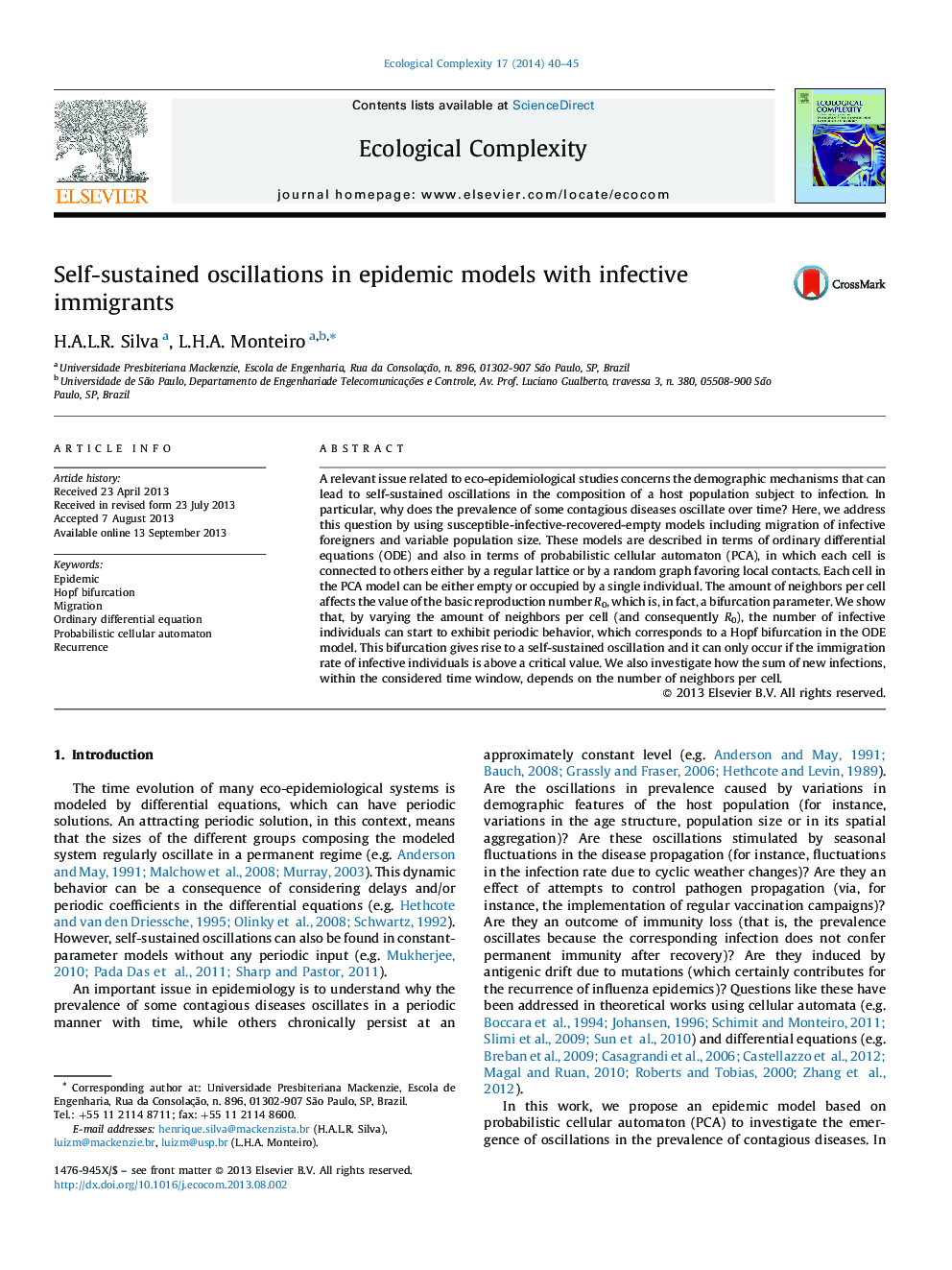| کد مقاله | کد نشریه | سال انتشار | مقاله انگلیسی | نسخه تمام متن |
|---|---|---|---|---|
| 4372464 | 1617097 | 2014 | 6 صفحه PDF | دانلود رایگان |
• Epidemic models with infective immigrants are proposed and analyzed.
• They are represented by cellular automaton (CA) and differential equations (DE).
• Oscillatory behavior can emerge in the CA graph by varying the number of neighbors.
• It is shown that this emergence corresponds to a Hopf bifurcation in the DE model.
• Surprisingly, increasing the neighborhood size can reduce the cumulative incidence.
A relevant issue related to eco-epidemiological studies concerns the demographic mechanisms that can lead to self-sustained oscillations in the composition of a host population subject to infection. In particular, why does the prevalence of some contagious diseases oscillate over time? Here, we address this question by using susceptible-infective-recovered-empty models including migration of infective foreigners and variable population size. These models are described in terms of ordinary differential equations (ODE) and also in terms of probabilistic cellular automaton (PCA), in which each cell is connected to others either by a regular lattice or by a random graph favoring local contacts. Each cell in the PCA model can be either empty or occupied by a single individual. The amount of neighbors per cell affects the value of the basic reproduction number R0, which is, in fact, a bifurcation parameter. We show that, by varying the amount of neighbors per cell (and consequently R0), the number of infective individuals can start to exhibit periodic behavior, which corresponds to a Hopf bifurcation in the ODE model. This bifurcation gives rise to a self-sustained oscillation and it can only occur if the immigration rate of infective individuals is above a critical value. We also investigate how the sum of new infections, within the considered time window, depends on the number of neighbors per cell.
Journal: Ecological Complexity - Volume 17, March 2014, Pages 40–45
